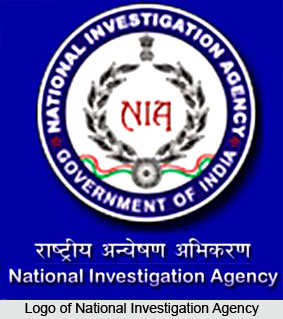 The National Investigation Agency has to, at the national level, investigate and prosecute offences affecting sovereignty, security and integrity of India, security of states, friendly relation with foreign states and offences under NIA Act 2008. The last was enacted to implement international treaties, agreements, conventions and resolutions of the United Nations and other international organizations and for matters connected therewith or incidental thereto.
The National Investigation Agency has to, at the national level, investigate and prosecute offences affecting sovereignty, security and integrity of India, security of states, friendly relation with foreign states and offences under NIA Act 2008. The last was enacted to implement international treaties, agreements, conventions and resolutions of the United Nations and other international organizations and for matters connected therewith or incidental thereto.
Formation of NIA
The large number of incidents of terrorist attacks has escalated over the past few years in various parts of the hinterland and major cities etc. A large number of such incidents are found to have complex inter-State and international linkages, and possible connection with other activities like the smuggling of arms and drugs, pushing in and circulation of fake Indian currency, infiltration from across the borders, etc. Keeping all these in view, it has been felt that there is need for setting up of an Agency at the Central level for investigation of offences related to terrorism and certain other Acts, which have national ramifications. Several experts and Committees, including the Administrative Reforms commission in its Report, have also made recommendations for establishing such an Agency. The Government after due consideration and examination of the issues involved, proposes to enact a legislation to make provisions for establishment of a National Investigation Agency in a concurrent jurisdiction framework, with provisions for taking up specific cases under specific Acts for investigation. Accordingly, the NIA Act was enacted on 31-12-08 and the National Investigation Agency (NIA) was born. At present NIA is functioning as the Central Counter Terrorism Law Enforcement Agency in India.
Organisation of NIA
The National Investigation Agency is divided into three functional divisions. These are the Investigation Division, Policy Research and Co-Ordination Division and the Administrative Division. The Investigation Division is headed by I.G (Investigation) under whom are 4 teams, each headed by an S.P. The SP`s report to DIG (Investigation). The Policy research and co-ordination division is headed by I.G. (Ops and Co-ordination) who is assisted by DIG (PRC).There are four teams each headed by a S.P who looks after Northern, Eastern, Western and Southern parts of the country. They Coordinate with State Police Forces and other Law enforcement agencies in States. At Headquarters, DIG (PRC) and IG (Ops and Coordn) look after the Coordination activities in various departments of the Central Government. The Technology /IT wing also report to IG (Ops & Coordn). The Division collects and collates information and data on terrorism and terrorist activities. AIG (policy) assists the division in various administrative issues. The Administrative Division looks after the Administrative and Accounts of NIA. Dy.S.P. (HQ) helps DIG (Policy and Administration) in various administrative works.
Functions of NIA
The National Investigation Agency has been created in pursuance of the enactment of the NIA Act, 2008, and it is mandated, at the national level, to investigate and prosecute offences affecting the sovereignty, security and integrity of India, friendly relations with foreign States and offences under Acts enacted to implement international treaties, agreements, conventions and resolutions of the United Nations and other international organizations and for matters connected therewith or incidental thereto.
The NIA is the only exclusive counter-terrorism agency in India. It is a law enforcement agency dedicated towards countering terrorists anywhere in India at anytime. The Indian Parliament has mandated that the NIA to be not merely a post-incident investigating agency, but also a pre-incident disruption agency. The principal professional challenge of the NIA lies in developing intelligence to disrupt an attack before it becomes an event.
As per the National Investigation Agency (Manner of Constitution) Rules, 2008, NIA is to provide assistance to, and seek assistance from other intelligence and investigation agencies of the Central Government and State Governments.



















